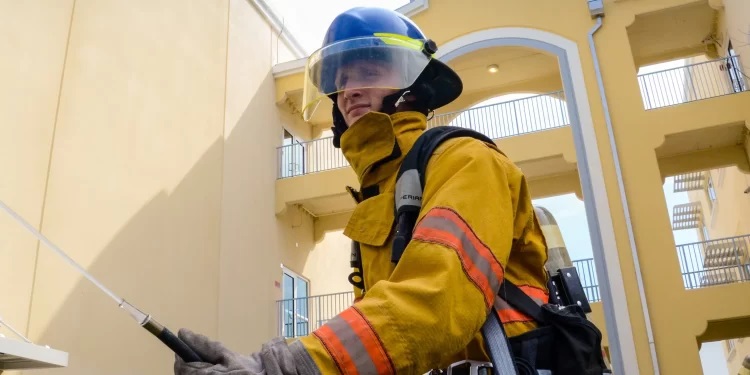
Firefighters have one of the most hazardous yet vital professions – walking into the flames when all instincts shout to run away. Besides a courageous spirit, firefighters rely on specialized gear engineered to operate in extreme environments.
A radio is equally essential among truck equipment, medical apparatuses, and oxygen tanks. Radios connect incident commands with first responders to deploy teams effectively. They also serve for firefighters to call for help when situations spin out of control.
No tool is arguably more vital than a firefighter’s radio during emergency scenarios. Therefore, the methods of securing gear against the rigors of fire ground operations hold immeasurable importance.
Types of Radio Straps Firefighters Use
Radio straps generally fall under two main categories – over-the-head or clip-on waist straps. Head straps allow control of the radio at chest level for easy access. They evenly distribute weight but can catch on equipment during ops.
Waist straps keep weight centered and leave the torso unrestricted. However, spare belly space is scarce real estate for many firefighters.
Finding the Perfect Fit
Ideally, radio straps should cling snugly without limiting mobility or causing discomfort on extended wear. The strap style that offers the “just right” balance of function and comfort depends on the individual. Testing different options whether geared up or not allows firefighters to assess what works best.
For over-the-head chest straps, a proper fit means the radio sits high near the collar bones without choking at the neck. The mic cord should reach comfortably to the shoulder and be accessible hands-free. Snaps, not Velcro, help tailor strap length while preventing unwanted loosening.
Proper waist straps ride above the belt line with enough give to bend at the hips. Straps should hug close enough that the radio doesn’t bounce or sway during rigorous activity. Foam and mesh padding prevent chafing and overheating for long-term comfort.
A Worthy Investment
Radio communication represents a lifeline for all firefighters. Something as vital as a well-fitted radio strap that performs when it counts merits due diligence. Testing options in true field conditions before purchase ensures the optimal, battle-tested choice.
Properly fitted radio straps firefighters use facilitate smooth communication and unhindered focus – delivering the capability and safety required of them.
Maintaining Quality Fit
Like all gear, radio straps endure heavy use and must withstand challenging environments. Inspection before each shift checks for signs of wear, including stretched or warped strapping. Fraying stitching also warrants swapping out compromised straps to avoid failure during critical moments.
Radio straps firefighters use for some time should also undergo periodic refitting as body shape and gear needs change. Factors like weight fluctuations impact optimal strap placement and security. Taking the time to assess and update fit ensures the radio gear supports rather than hinders activity.
Fit for Purpose
Consider durability and design besides bargain pricing when shopping for replacement radio straps. Well-constructed straps made of cut-proof ballistic nylon last through years of service. Seek straps incorporating firefighter feedback that undergo testing under extreme heat and weight loads mimicking real-world conditions.
Purpose-built for your department’s radio model, a good radio strap allows customization of antenna feeds, microphone wires, and accessory ports. This prevents straps from obstructing access while keeping essential functions within easy reach. Something as vital as a well-fitted radio strap that performs when it counts certainly merits due diligence.





